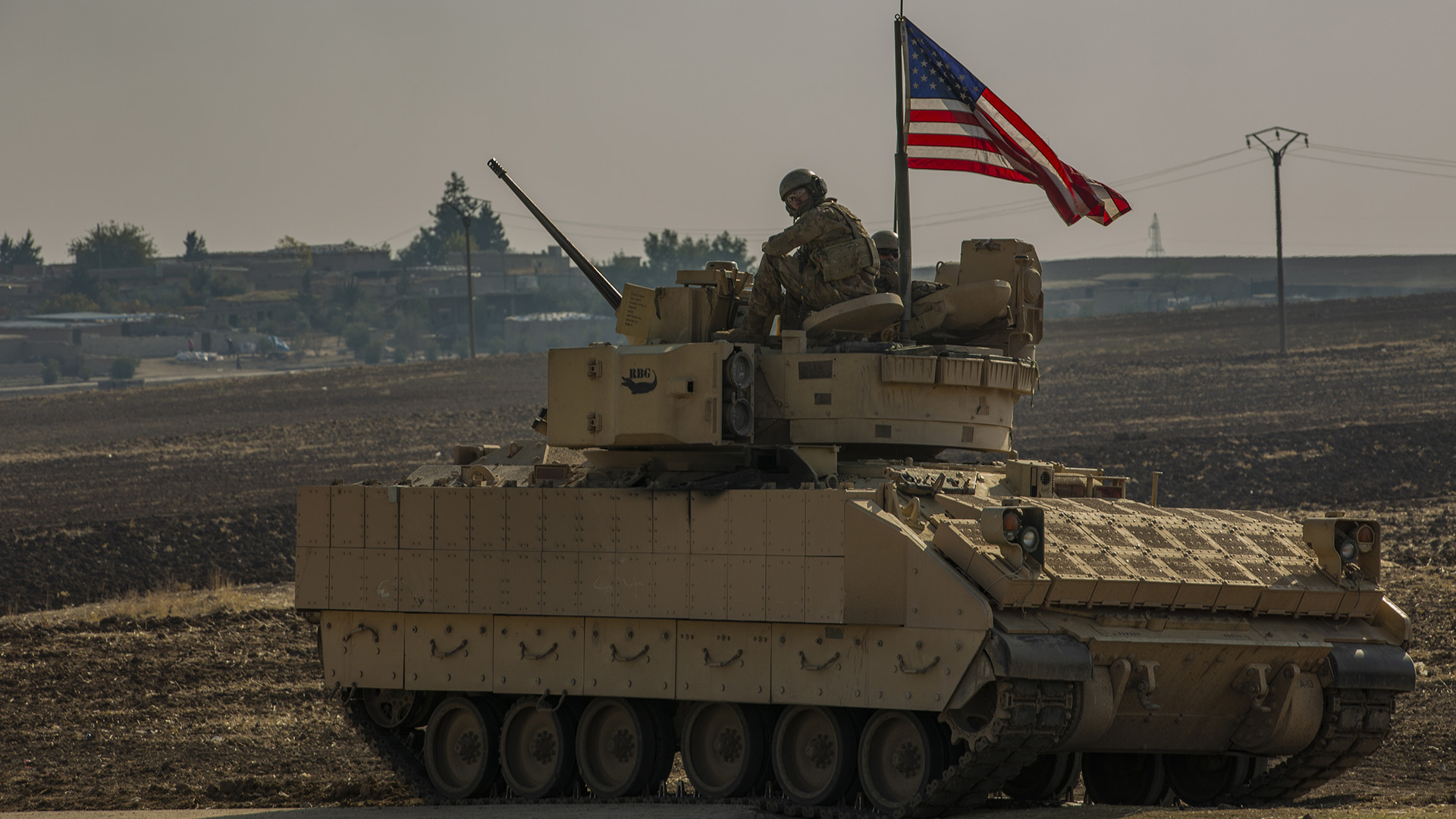

The U.S. military’s latest airstrikes against Iranian-backed groups in Syria underscores how difficult it has become to get basic information about American forces deployed to the Middle East.
U.S. Central Command, or CENTCOM, announced on Monday that the airstrikes were “in response to several attacks on U.S. personnel in Syria over the last 24 hours.”
This was the first time that U.S. military officials had acknowledged that American service members in Syria had been attacked recently.
Air Force Maj. Gen. Pat Ryder, a Pentagon spokesman, told reporters on Monday that U.S. troops at Mission Support Site Green Village in northeast Syria had come under two separate attacks on Sunday by a drone and two rockets.
No U.S. troops were injured in the attacks, Ryder said during a Pentagon news briefing.
When asked why CENTCOM had not initially announced Sunday’s attacks against Green Village — and other recent events — Ryder cited operational security concerns.
“As for the timing of that release, just to be quite frank: As there were operations ongoing to respond to these attacks against U.S. forces at Green Village, the decision was made to ensure that those operations were complete before CENTCOM issued its press release, again, fully aware, as I highlighted to your colleague, of the media and public interest in these types of situations,” Ryder said. “And so, again, we’ll continue to work diligently to ensure we’re putting out as much information as possible as quickly as possible consistent with operations security and balancing the public’s right to know.”
Subscribe to Task & Purpose today. Get the latest military news and culture in your inbox daily.
On Monday, a defense official told Task & Purpose that no U.S. service members had been wounded in the attacks and all American troops in the region have been accounted for, but the official declined to specify when and where the attacks in Syria had taken place.
The U.S. airstrikes struck nine targets in two locations that were “associated with Iranian groups,” CENTCOM said in a statement. No further information was immediately available about where the strikes were carried out or which Iranian groups were targeted.
Ryder had no information on Monday on how many Iranian-backed proxy forces may have been killed in the strikes.
Since Hamas launched its Oct. 7, 2023, terrorist attack on Israel, U.S. troops in the Middle East have been fighting a two-front war against both the Islamic State group and Iranian proxies, which U.S. defense officials have blamed for a Jan. 28 drone attack in Jordan that killed three soldiers.
Such attacks have “diverted resources and attention” from the U.S.-led coalition against ISIS and “hindered momentum,” a February report from the Lead Inspector General on Operation Inherent Resolve found.
The U.S. military’s initial silence about the most recent attacks against American service members in Syria is not an isolated phenomenon. Last month, the Pentagon only acknowledged that two U.S. service members had been wounded during a mission against the Islamic State group in Iraq only after a reporter asked directly if there had been any American casualties.
CENTCOM is also releasing information on U.S. and partner force missions in Iraq and Syria less frequently than it has in the past. The command used to provide monthly updates. So far in 2024, CENTCOM has released three updates, first in April, then July, and then in November.
In July’s news release, CENTCOM announced that the number of ISIS attacks was soaring.
“From January to June 2024, ISIS has claimed 153 attacks in Iraq and Syria,” the news release said. “At this rate, ISIS is on pace to more than double the total number of attacks they claimed in 2023. The increase in attacks indicates ISIS is attempting to reconstitute following several years of decreased capability.”
In an exclusive interview with Task & Purpose in June, the commander of U.S. troops in Iraq and Syria at the time said that ISIS had been severely weakened, but the underlying conditions that allowed it to take root remain unresolved in Syria.
“There’s economic challenges in the Sunni areas, quite frankly,” said Army Lt. Gen. Joel “JB” Vowell, then a two-star general. “Those instability challenges are there: lack of education, lack of opportunity, lack of jobs. And extremism is still fomenting out in the deserts in the Middle Euphrates River Valley, in the Sunni tribes.”
Meanwhile, the future of the U.S. mission in Iraq remains unclear. Both countries reached a bilateral security agreement in September, but U.S. officials were unable to explain to reporters if any of the roughly 2,500 American service members currently deployed to Iraq will leave.
Even though it has largely become a shadow war, the fight against ISIS is not over. On Nov. 4, CENTCOM announced that U.S. and partner forces in Iraq and Syria had conducted 95 missions against ISIS in the past 60 days, which led to 163 suspected terrorists being killed and another 33 captured.
“Alongside our coalition and Iraqi partners, we will continue to aggressively pursue these terrorists and disrupt their capability to conduct operations against U.S. interests, as well as those of our allies and partners,” Army Gen. Michael Erik Kurilla, head of CENTCOM, said in a statement.
Update: 11/12/2024; This article was updated after publication with additional information from Air Force Maj. Gen. Pat Ryder, a Pentagon spokesman.
The latest on Task & Purpose
- Marine recruit flees boot camp, stopped at airport
- Navy fires commander of San Diego Leadership and Ethics Command
- Air Force fires commander at Montana nuclear missile base after investigation
- DoD can’t confirm whether North Korean troops in Russia are ‘gorging on pornography’
- An enemy commander told him to surrender. This Army captain threw a grenade instead.
